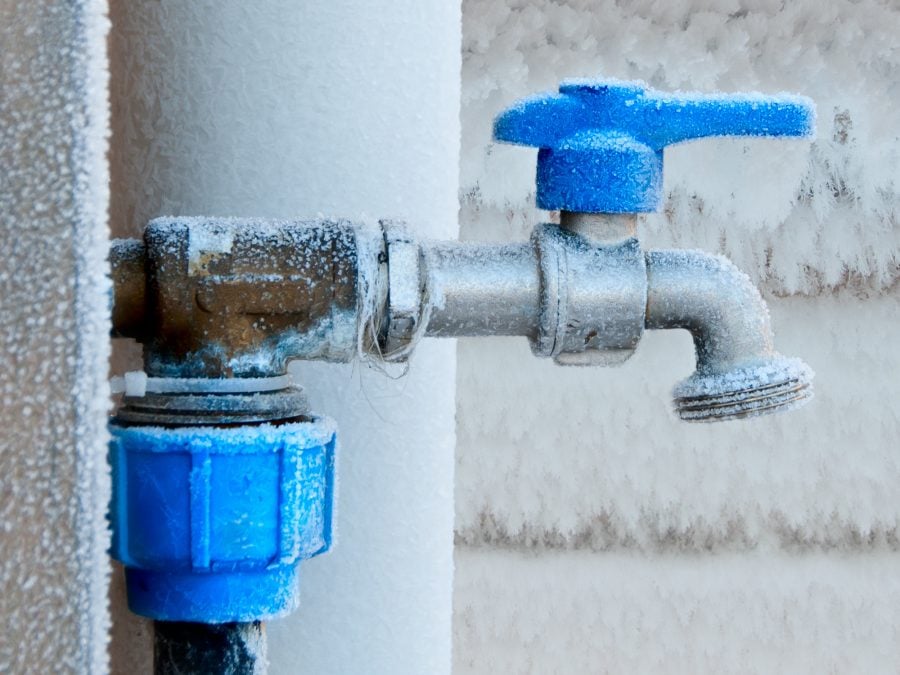Avoiding Frozen Pipes in Winter: Professional Advice
Avoiding Frozen Pipes in Winter: Professional Advice
Blog Article
How do you feel with regards to Preventing and dealing with frozen pipes?

Winter can ruin your pipes, specifically by freezing pipelines. Below's just how to avoid it from occurring and what to do if it does.
Intro
As temperature levels drop, the risk of icy pipes rises, possibly resulting in pricey repair work and water damage. Recognizing just how to prevent frozen pipes is essential for homeowners in cool environments.
Comprehending Icy Pipelines
What causes pipes to freeze?
Pipes freeze when revealed to temperature levels below 32 ° F (0 ° C) for expanded periods. As water inside the pipelines freezes, it broadens, taxing the pipeline walls and potentially creating them to rupture.
Risks and damages
Frozen pipes can result in supply of water interruptions, building damages, and costly repairs. Ruptured pipelines can flooding homes and cause extensive architectural damages.
Signs of Frozen Pipes
Identifying icy pipelines early can avoid them from bursting.
Exactly how to determine icy pipelines
Try to find lowered water flow from taps, unusual odors or noises from pipes, and visible frost on revealed pipelines.
Prevention Tips
Insulating vulnerable pipes
Cover pipelines in insulation sleeves or utilize warm tape to safeguard them from freezing temperatures. Concentrate on pipes in unheated or exterior areas of the home.
Heating strategies
Maintain interior areas appropriately warmed, specifically locations with plumbing. Open cupboard doors to enable cozy air to circulate around pipelines under sinks.
Shielding Outdoor Pipes
Garden tubes and outdoor faucets
Disconnect and drain garden pipes prior to wintertime. Set up frost-proof faucets or cover outside faucets with protected caps.
What to Do If Your Pipes Freeze
Immediate activities to take
If you suspect frozen pipelines, keep faucets available to relieve pressure as the ice melts. Utilize a hairdryer or towels taken in warm water to thaw pipes gradually.
Long-Term Solutions
Structural changes
Consider rerouting pipes far from exterior wall surfaces or unheated locations. Include additional insulation to attic rooms, cellars, and crawl spaces.
Updating insulation
Invest in top quality insulation for pipelines, attic rooms, and walls. Proper insulation aids preserve consistent temperature levels and lowers the danger of icy pipelines.
Conclusion
Stopping icy pipes calls for positive actions and fast responses. By understanding the causes, indicators, and preventive measures, homeowners can secure their plumbing during winter.
6 Proven Ways to Prevent Frozen Pipes and Protect Your Home
Disconnect and Drain Garden Hoses
Before winter arrives, start by disconnecting your garden hoses and draining any remaining water. Close the shut-off valves that supply outdoor hose bibs and leave the outdoor faucet open to allow any residual water to drain. For extra protection, consider using faucet covers throughout the colder months. It’s also important to drain water from any sprinkler supply lines following the manufacturer’s directions.
Insulate Exposed Pipes
Insulating your pipes is an effective way to prevent freezing. Pipe insulation is readily available at home improvement stores and is relatively inexpensive. Pay close attention to pipes in unheated areas such as the attic, basement, crawl spaces, or garage. Apply foam insulation generously to create a buffer against the cold. You can also wrap your pipes in heat tape or thermostat-controlled heat cables for added warmth.
Seal Air Leaks
Inspect your home for any cracks or openings that could let in cold air. Seal any holes around the piping in interior or exterior walls, as well as the sill plates where your home rests on its foundation. Additionally, make sure to keep your garage door closed unless you’re entering or exiting. Leaving it open creates a significant air leak that can lead to frozen pipes.
Allow Warm Air Circulation
During cold snaps, it’s essential to allow warm air to circulate evenly throughout your home. Leave interior doors ajar to promote better airflow. Open kitchen and bathroom cabinets to help distribute heat consistently around the rooms. If you have small children or pets, be sure to remove any household chemicals or potentially harmful cleaners from open cabinets for safety.
Let Faucets Drip
A small trickle of water can make a big difference in preventing ice formation inside your pipes. When temperatures drop significantly, start a drip of water from all faucets served by exposed pipes. This continuous flow helps prevent the water from freezing. Additionally, running a few faucets slightly can relieve pressure inside the pipes, reducing the chances of a rupture if the water inside does freeze.
https://choateshvac.com/6-proven-ways-to-prevent-frozen-pipes-and-protect-your-home/

Do you appreciate reading about Winter Plumbing Precautions: Preventing Frozen Pipes? Leave feedback directly below. We would be delighted to find out your opinions about this write up. In hopes to see you back again before long. Don't hesitate to take the opportunity to distribute this blog post if you liked it. Thanks a lot for going through it.
Click Here Report this page